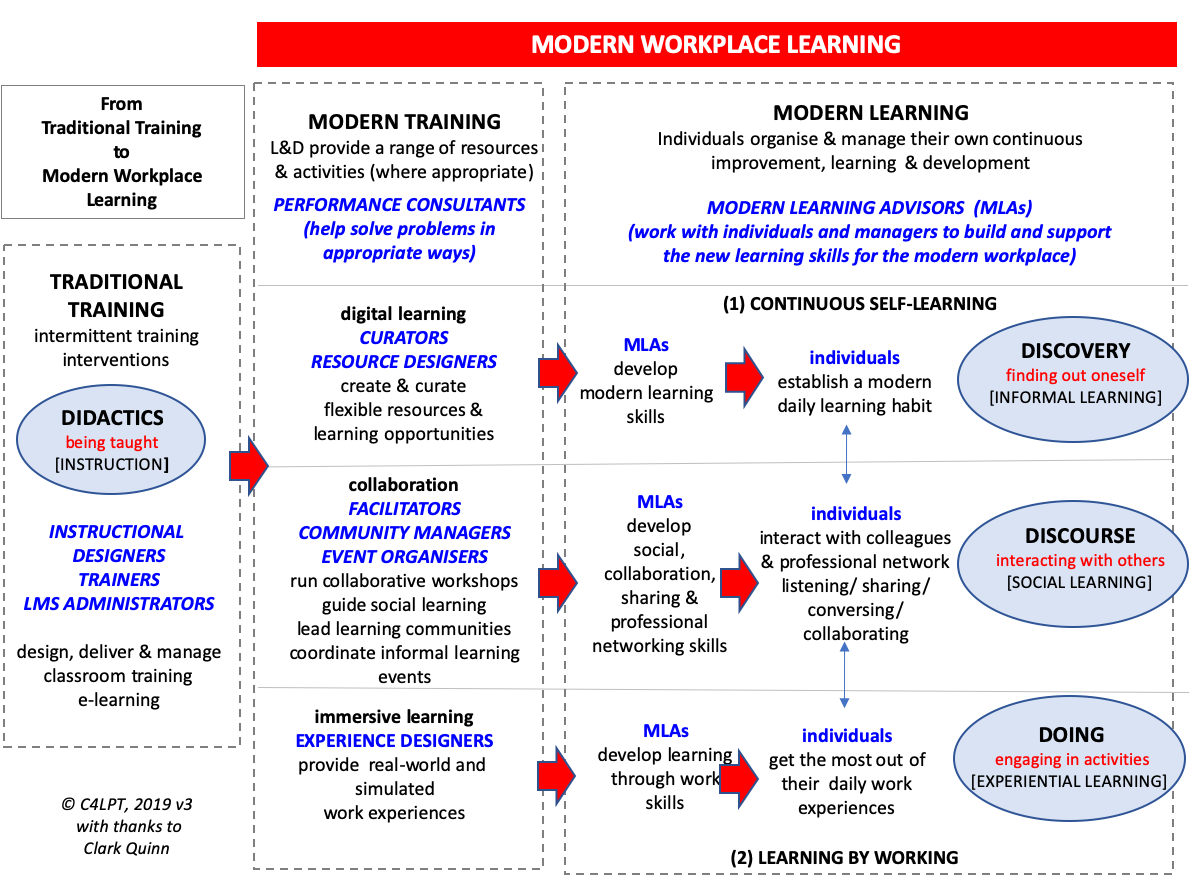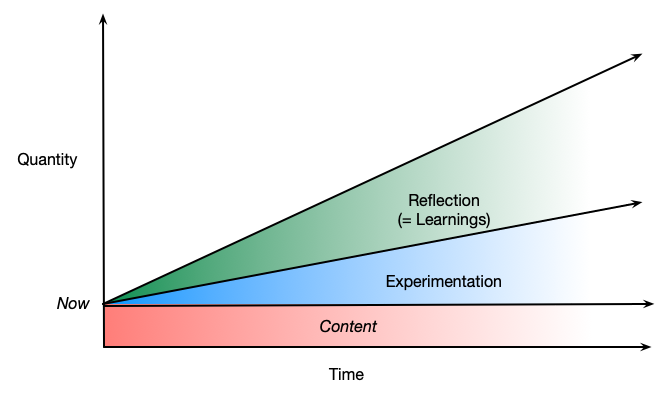 I was thinking a bit about distributed cognition, and recognized that there as a potentially important way to tease that apart. And I’ll talk it out first here, and maybe a diagram will emerge. Or not. The point is to think about how external tools can augment our thinking. Or, really, a way that at least partly, we have cognition external.
I was thinking a bit about distributed cognition, and recognized that there as a potentially important way to tease that apart. And I’ll talk it out first here, and maybe a diagram will emerge. Or not. The point is to think about how external tools can augment our thinking. Or, really, a way that at least partly, we have cognition external.
The evidence says that our thinking isn’t completely in our head. And I’ve suggested that that makes a good case for performance support. But I realize it goes further in ways I’ve thought about it elsewhere. So I want to pull those together.
The alternative to performance support, a sort of cognitive scaffolding, is to think about representation. Here we’re not necessarily supporting any particular performance, but instead supporting developing thinking. I shared Jane Hart’s diagram yesterday, and I know that it’s a revision of a prior one. And that’s important!
The diagram is capturing her framework, and such externalizations are a way to share; they’re a social as well as artifactual sharing. It’s part of a ‘show your work‘ approach to continuing to think. Of course, it doesn’t have to be social, it can be personal.
So both of these forms of distributed cognition are externalizing our thinking in ways that our minds have trouble comprehending. We can play around with relationships by spatially representing them. We can augment our cognitive gaps both formally through performance support, and informally by supporting externalizing our thinking. Spreadsheets are another tool to externalize our thinking. So, too, for that matter, is text.
So we can augment our performance, and scaffold our thinking. Both can be social or solitary, but they both qualify as forms of distributed cognition (beyond social). And, importantly, both then should be consciously considered in thinking about revolutionizing L&D. We should be designing for cognition external. The tools should be there, and the facilitation, to use either when appropriate. So, think distributed, as well as situated, and social. It’s how our brains work, we ought to use that as a guide. You think?


